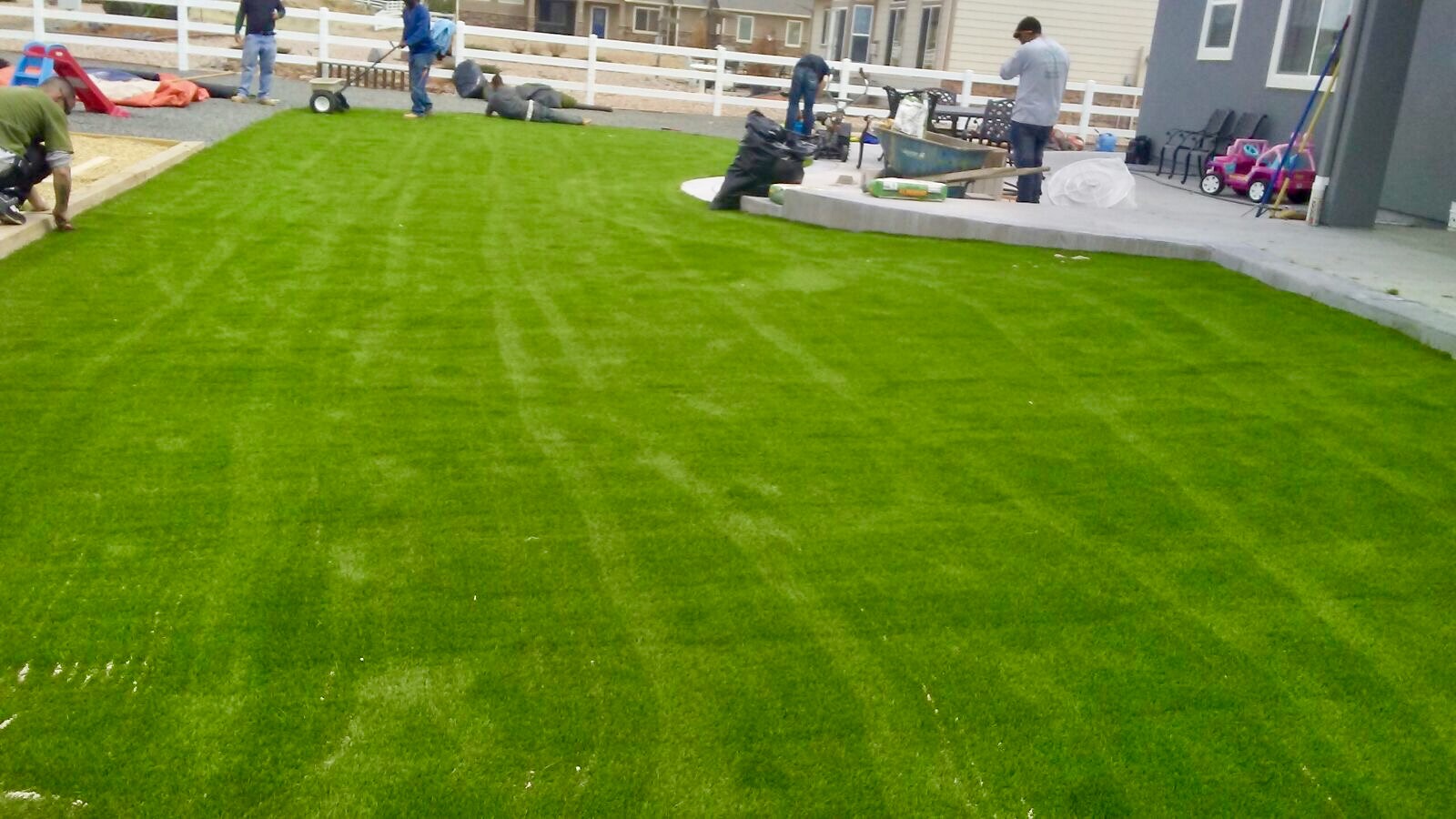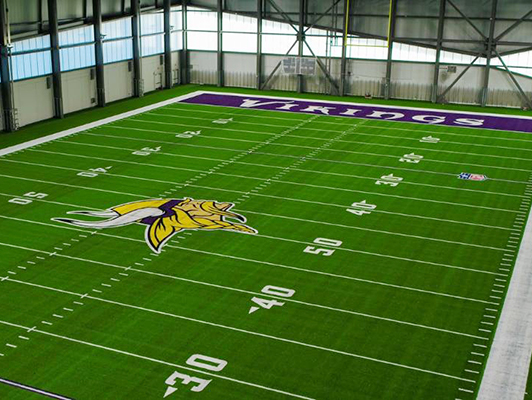Leading Phoenix Turf Companies Offering Superior Synthetic Grass Options
Wiki Article
Delve Into the Environmental Benefits of Opting for Artificial Turf Solutions
The adoption of artificial grass services presents a compelling possibility to deal with pressing ecological obstacles. By dramatically lowering water use and decreasing the application of dangerous chemicals, these choices not just advertise sustainable landscaping but also shield local communities.Water Preservation Advantages
One of the most substantial benefits of fabricated grass is its ability to preserve water. In contrast, man-made grass does not need watering, substantially reducing the overall need for water resources.By removing the requirement for regular watering, synthetic grass contributes to sustainable landscape practices and aids minimize the ecological impact of too much water consumption. The preservation of water expands to the decrease of overflow, which can lead to dirt disintegration and waterway pollution.
Furthermore, the installation of synthetic grass enables communities and property owners to allocate water sources more efficiently, concentrating on essential usages such as alcohol consumption water and farming. The shift in the direction of synthetic grass not just promotes accountable water usage yet also lines up with more comprehensive ecological objectives targeted at preserving natural deposits.
As areas increasingly focus on sustainability, the water conservation benefits of synthetic grass provide an engaging case for its adoption in commercial and property landscaping projects.
Reduced Chemical Usage
The transition to synthetic grass considerably reduces the reliance on chemical therapies frequently made use of in all-natural lawn maintenance. Typical turf management normally involves the application of herbicides, plant foods, and chemicals to promote growth and control insects. These chemicals can position risks to human health, neighborhood wildlife, and the atmosphere, adding to dirt and water contamination.On the other hand, synthetic turf eliminates the demand for these dangerous substances. As soon as mounted, it calls for marginal maintenance, mainly consisting of normal cleansing and irregular infill replenishment. This decrease in chemical use not only benefits the instant setting however likewise adds to wider environmental security. By reducing the launch of synthetic compounds right into the community, synthetic grass advertises healthier dirt and water supply.
In addition, the lack of chemical overflow connected with synthetic grass installments assists shield neighborhood waterways from contamination, sustaining marine life and preserving biodiversity. Arizona turf. As areas progressively prioritize sustainable practices, opting for synthetic grass presents a sensible service that lines up with ecological conservation objectives. With this shift, home owners can delight in lavish green spaces without jeopardizing environmental health, paving the means for a more lasting future
Reduced Carbon Footprint

Additionally, the installment of synthetic grass can result in substantial water preservation. All-natural grass require substantial quantities of water for irrigation, which not only includes to the carbon footprint connected with water removal and treatment yet additionally strains regional water sources. In contrast, synthetic grass requires marginal maintenance, requiring no watering, therefore considerably minimizing water usage and its linked power costs.
Additionally, the durability of synthetic grass adds to its decreased carbon influence. With a life-span of approximately 15 years or even more, the demand for constant substitutes is reduced, leading to less waste and lower energy consumption in production and getting rid of standard lawn options. Generally, synthetic grass presents a sustainable option for eco aware landscaping.
Habitat Conservation
Environment preservation is a vital consideration my link in the argument over landscape design selections, especially when comparing fabricated grass to natural yard. Natural turf yards often call for substantial upkeep, including using plant foods, pesticides, and herbicides, which can negatively influence neighborhood communities. These chemicals can seep into the dirt and waterways, hurting native vegetation and fauna and disrupting regional habitats.
In comparison, synthetic grass offers a possibility to decrease the ecological impact of landscaping. By choosing artificial turf, home owners can decrease the disturbance of natural environments connected with conventional lawn care methods. Synthetic grass gets rid of the requirement for hazardous chemicals, therefore securing close-by wild animals and maintaining the integrity of surrounding ecosystems. The installation of synthetic turf can lead to the conversion of former lawn locations right into more biodiverse landscapes, such as pollinator gardens or native plant locations, which can support regional wildlife.
Inevitably, the shift to synthetic grass not only conserves water and decreases maintenance initiatives yet additionally cultivates an extra harmonious relationship between human activities and the all-natural setting, promoting habitat preservation at the same time.
Long-Term Sustainability
Lasting sustainability is an essential consider evaluating the benefits of synthetic grass over typical grass yards. One of the most substantial advantages of fabricated grass is its resilience; it can last approximately 15-20 years with minimal maintenance, whereas all-natural turf requires frequent reseeding and substitute. This durability lowers the requirement for constant resources, such as water, plant foods, and pesticides, which are crucial for maintaining a healthy and balanced grass yard.Furthermore, synthetic grass contributes to a decrease in carbon exhausts related to grass care devices. Traditional yards often need gas-powered lawn mowers, trimmers, and blowers, all of which add to air contamination. Artificial turf companies phoenix. On the Phoenix turf companies other hand, artificial grass removes the demand for such equipment, promoting a cleaner atmosphere
In addition, the production of synthetic grass significantly utilizes recycled products, boosting its sustainability account. As producers embrace green practices, the environmental footprint of synthetic grass proceeds to reduce.

Verdict
The fostering of artificial turf services offers substantial environmental benefits, consisting of considerable water preservation, decreased dependence on unsafe chemicals, and a lower carbon footprint. Man-made grass aids in preserving all-natural habitats by reducing land disturbance and advertising long-lasting sustainability through the usage of sturdy materials. Collectively, these variables emphasize the capacity of synthetic grass to add positively to ecological health and wellness and offer a sensible option to conventional landscape design methods in a progressively resource-conscious globe.In comparison, synthetic turf does not require watering, significantly reducing the overall need for water sources. By minimizing the launch of synthetic compounds right into the ecological community, man-made grass advertises healthier dirt and water systems.
Additionally, the installment of man-made turf can result in considerable water preservation. In comparison, synthetic lawn needs very little upkeep, requiring no watering, consequently significantly minimizing water use and its associated power prices.

Report this wiki page